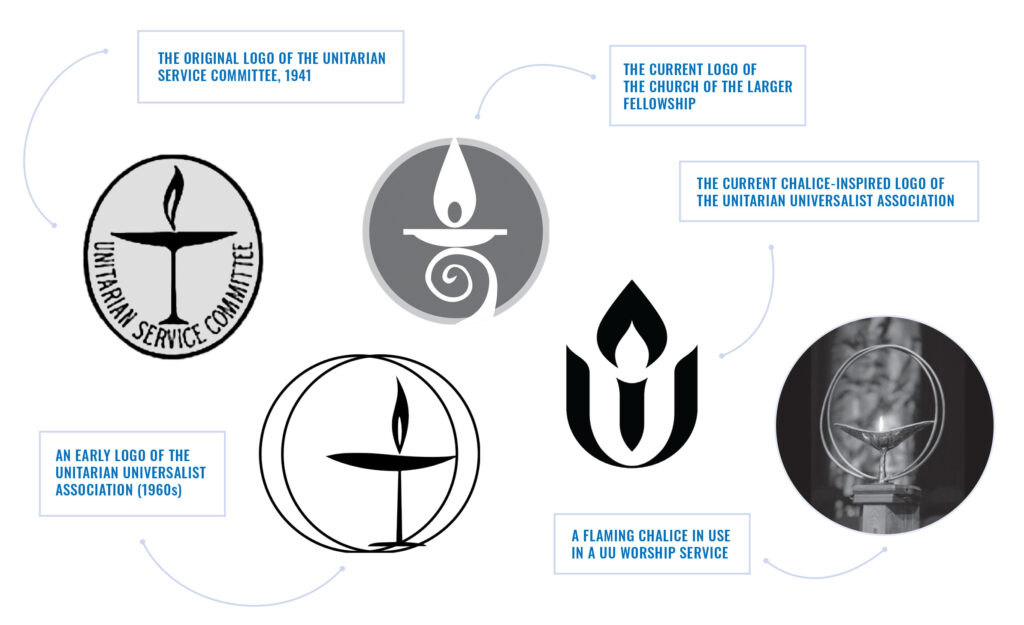Our Flaming Chalice: History & Current Use
August 18, 2023In the 1940s, as the German army began to impose its totalitarianism across Europe, many people fled in fear of their lives. At the time, the Unitarian Service Committee (USC) committed itself to rescuing as many refugees as possible. Their work was dangerous, and they saved the lives of many.
The documents created to help these refugees escape needed an official logo, so Dr. Charles Joy of the Unitarian Service Committee hired a graphic designer, Hans Deutsch, himself a refugee, to create one. The flaming chalice drew upon ancient religious symbols to be an official seal for the USC. The communion chalice, the holy oils used for blessing in many religions, the altars of Greek and Roman times, and lights put in the window as a symbol of hospitality are all evoked by the flaming chalice.
Throughout World War II, this symbol guided refugees to safety on travel documents, business cards, and in the windows of otherwise hidden offices.
After the war, the flaming chalice gained popularity as a symbol of Unitarianism, and then later of Unitarian Universalism. The ritual lighting of the chalice in UU worship became widespread in our congregations in the 1970s.
Our flaming chalice is still a symbol of life-saving welcome. Where it burns, its light beckons us all to live up to our shared principles and participate in the liberation of all people.

- Winter Magic - December 12, 2024
- Post-Election Message - November 20, 2024
- On Covenant and Accountability - September 11, 2024
Quest Monthly Print Edition
Recent Issues
Latest Spiritual Reflection Posts
Weekly Newsletter
About
Quest for Meaning is a program of the Church of the Larger Fellowship (CLF).
As a Unitarian Universalist congregation with no geographical boundary, the CLF creates global spiritual community, rooted in profound love, which cultivates wonder, imagination, and the courage to act.
Contact
Church of the Larger Fellowship Unitarian Universalist (CLFUU)
24 Farnsworth Street
Boston MA 02210
